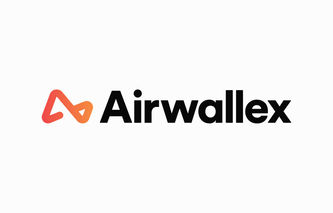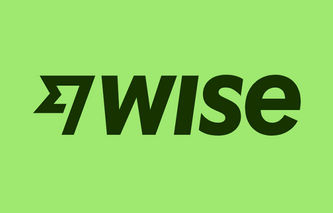For many companies, sending or receiving cross border payments is the norm and support for the industry, and choice for businesses with international requirements, continues to grow.
Here’s a breakdown of the market and some of the key figures behind its growth.
Overall, the Financial Stability Board (FSB) estimates that the Swift network transfers the equivalent of the world GDP every three days, across an estimated 5,835 country and currency pairs.
Cross border payments market size
The size of the cross border payments market in 2023 was $190.1tn. This is expected to increase by 56% over the next ten years with a compound annual growth rate (CAGR) of around 5% over the next five years.
Of the current market, $91.2tn is through wholesale banks and investments.
There is also $3.1tn attributed to C2B payments, and a further $1.7tn for B2C payments. These cover markets such as healthcare, ecommerce and travel and elsewhere that international payments are important to day-to-day payments. International payment gateways serve as a key facilitator between customers and businesses, with international transaction fees and chargebacks an important factor.
Beyond this, there’s also $10.0tn for B2B payments, for elements such as supplier payments, paying staff and expense management.
It is expected that B2B e-commerce payments will be a core factor for payments moving forward. By 2030, B2B ecommerce is expected to be the biggest international payment market.
Global payments market segement | Current size ($) |
|---|---|
Wholesale - Banks / Investors | $91.2tn |
Wholesale - Institutional investors | $26.3tn |
Wholesale - Hedge Funds & Proprietary Trading Firms | $25.8tn |
Large enterprise | $17.2tn |
SMB | $10.4tn |
B2B Ecommerce | $10.0tn |
C2B | $3.1tn |
C2C | $1.8tn |
B2C | $1.7tn |
FXC Intelligence data
Key economies leading the way
The most used currencies for cross border payments are:
Currency | Transactions involved in |
|---|---|
US dollar (USD) | 58.07% |
Euro (EUR) | 13.19% |
Japanese Yen (JPY) | 5.36% |
Pound sterling (GBP) | 5.13% |
Chinese Yuan (CNY) | 3.23% |
June 2024
While the Euro accounts for 13.19% of SWIFT transactions, the UK is actually the biggest country in Europe for market share, which is at 23%.
Challenges
In October 2024, FSB released its 2024 annual report on the progress of key performance indicators (KPIs) for cross-border payments.
The report shows limited progress toward achieving the targets set for cheaper, faster, more transparent, and more accessible payments.
The biggest challenges in the cross border payments market according to the report are:
Cost of payments
Speed of payments
Access and transparency
Cost challenges
The FSB has a cost target of 1% for retail payments.
Currently, there is no payment gateway on the market offering an overall 1% cost for international transactions.
Speed challenges
While many cross border payment providers push speed as a key factor, data from the FSB actually shows a decrease against 2023 for the average speed of a cross border transactions.
For B2B and business-to-person B2C payments, only 5.9% and 4.9% of services, respectively, settled within one hour.
In some cases, international payment gateways like Stripe have settlement timeframes of up to 14 days.
Outside of this, international payments take 55% longer than domestic payments.
Access and transparency challenges
The report shows that there is still almost 10% of micro, small and medium sized businesses which need access to transaction accounts. Primarily these are based in South Asia and the Middle East.
Then, the FSB estimates only 55.6% of services are fully transparent with costs and speed information to users, allowing them to make an informed decision.
Cross border payments market size and future market size
It’s predicted that by 2028, the cross border payments market could exceed $200 trillion in transaction value, reflecting a compound CAGR of approximately 5-7%. Overall, expected increases are 56%, or $106tn by the end of 2034.
This growth is fuelled by increasing international trade, the proliferation of e-commerce, and the adoption of digital payment solutions.
It is expected that small and medium sized businesses will play a big role in pushing this growth.
Costs and exchange rate impact
The cost of cross border payments comes in two key areas, the cost of sending payments and the cost of receiving payments.
For sending payments, the average cost is between 0.5% and 3% with a specific cross border payment provider. This can rise upwards to 5% of the total amount if using a traditional banking method.
The cost of sending cross border payments is split between an exchange rate and a fee. For example, Wise Business offers transfers at the mid-market rate (0%) but has fees from 0.33%. For comparison, a currency broker like TorFX would offer fee-free transfers, but exchange rates from 0.5%.
The cost of receiving cross border payments could include both of the above.
Costs will include international transaction costs, these can be from 1.2%, but average around the 2%. These often have a set fee as well, which will be around $0.30 per transaction (or a GBP/EUR equivalent).
Individual markets
Ernst & Young Global highlighted some data around each market type over a four year period.
Growth in each markets between 2019 and 2022 were:
Market | CAGR |
|---|---|
B2B | 5% |
B2C | 8% |
C2B | 9% |
C2C | 4% |
Across all markets, 58% of payments were card payments.
Currency risk within cross border payments
Currency risk, also known as exchange-rate risk, is the potential for financial loss due to fluctuations in the exchange rates between currencies involved in cross-border transactions.
This risk arises because the value of one currency relative to another can change between the time a transaction is initiated and the time it is settled, affecting the actual cost or revenue in the domestic currency.




